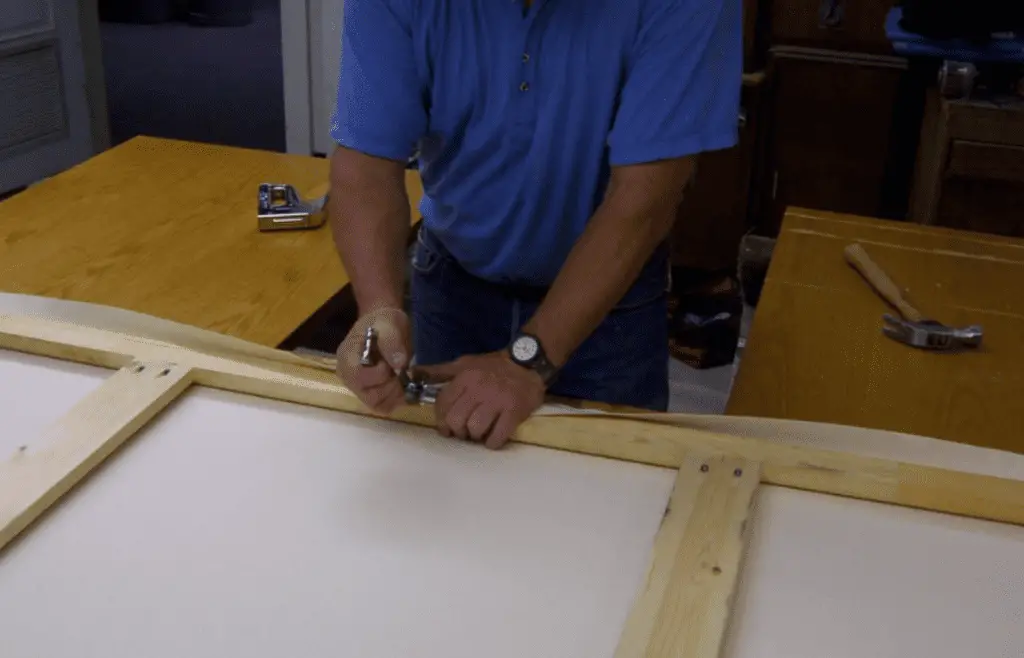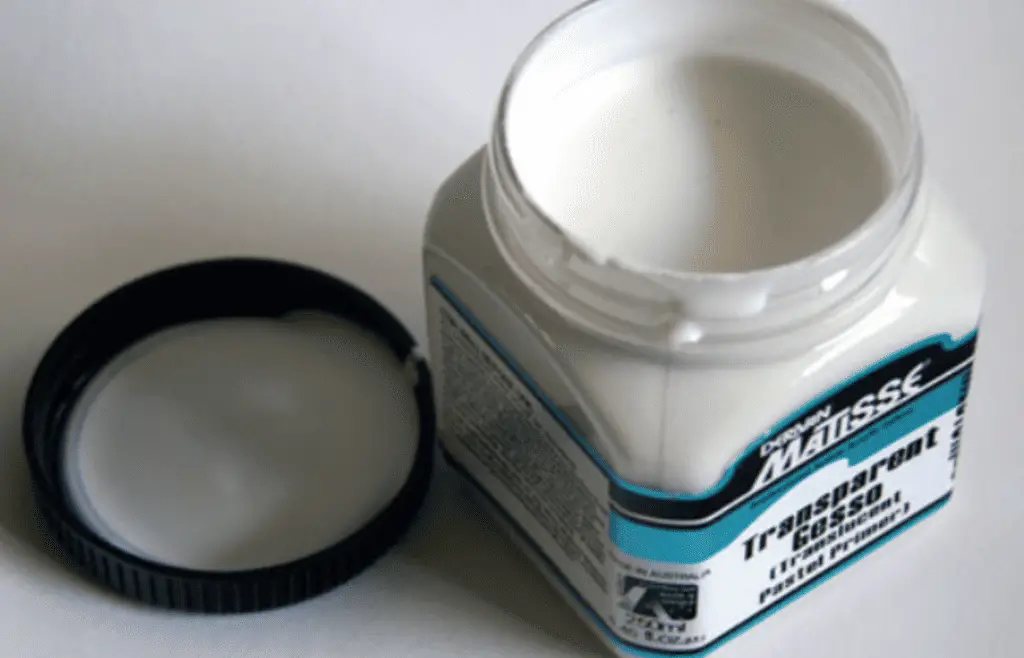Gesso has been a preferred primer for canvas by many artists, especially ones who love to use acrylic or oil paints. Canvas benefits greatly from the even, smooth finish and toothy grip of a good layer or two of gesso. Artists that work with canvas also know to be wary of tightness, so it’s important to know whether gesso tightens canvas before going to use it.
Gesso can cause canvas to tighten slightly, but not to the extent that it should ruin a future or finished painting. The tightening effect is usually only temporary and only happens when the gesso is still wet. When any kind of wet product comes into contact with canvas, it’ll cause the fibers that make up the fabric to contract.
As long as a canvas isn’t already on the brink of being too tight, using gesso on canvas shouldn’t cause you any issues.
Understanding Gesso’s Role in Preparing Canvas

Gesso works as a primer on canvas, helping to turn it into an even surface that paint will sit on top of. This helps you avoid having your paints of choice sink into the canvas or show through the other side. It can also help brighten up canvas and change it from an off-white color to stark white, or a different color should you choose a colored gesso.
A lot of pre-stretched canvas will come already primed so you can go ahead and paint as soon as you bring your canvas home. Some painters still like adding a layer of gesso to be safe. Gesso also helps to add a better surface grip to the canvas which can help paint stay in place long after it dries.
Gesso comes in artist grade and student grade as well as in different ranges of thickness. A layer of gesso needs to be able to dry in an even coat to work its magic so using the right priming technique is essential. It can take some getting used to the texture of gesso before a painter feels confident using it.
To check the current price and availability of Mont Marte Gesso, click here to view the listing on Amazon.
Understanding Canvas Tightness

Canvas is made of fabric that is stretched over a frame to make it a paintable surface. It’s much easier to find pre-stretched canvas in art stores, dollar stores and even general department stores than to try and stretch it yourself. However, many artists enjoy the process of buying strips of canvas and stretching it over their frame of choice.
Moisture and heat are two of the biggest contributing factors to canvas tightness. When moisture hits the fabric, it will cause the delicate fibers that weave the canvas together to tighten. However, once the canvas is dry again, it’ll go back to its natural shape. Too much heat can cause canvas to tighten up more permanently.
If canvas is too tight, it could cause paint to crack as it’s being applied. Additionally, if too much pressure is placed on canvas that’s too tight, it could potentially rip. Canvas needs to be stretched and taut over a frame, however, in order to make sure you have a flat surface to paint on.
The last thing you want is your brush dipping into fabric that’s constantly moving.
Relationship Between Gesso and Canvas Tightness
Since gesso is a wet product, using it on canvas can cause it to tighten a little bit. The amount of moisture in your gesso will impact how much the canvas will tighten.
Furthermore, gesso helps protect your canvas from future damage of the elements such as moisture or humidity. It can help make sure that any kind of paint doesn’t sink into the canvas either.
A lot of painters like to dilute their gesso before using it because it makes it easier to work with. There’s nothing wrong with doing this so long as you make sure to mix the water and gesso adequately. Otherwise, you might be transferring more moisture to the canvas than intended, causing it to become tighter than you might want.
If using acrylic or oil paints, you’ll want to have at least a couple of layers of gesso. In between layers, sanding your gesso is also recommended to keep the surface smooth. The canvas should be given plenty of time to dry between layers to avoid making your canvas too wet.
Discussion of Different Gesso Types and Their Effects on Canvas Tightness
You have a lot of options for gesso that can be used on canvas. What matters most is using the type of canvas you are comfortable with. Different types of gesso will have different amounts of moisture in them as moisture content helps determine how thin or thick the gesso is. The thinner the gesso is, the tighter your canvas will become as you prime it.
Once again, the technique you use to apply gesso and a good amount of patience are ultimately going to impact the way a canvas turns out much more than the specific type of gesso you use. Gesso needs to be mixed well and applied one thin layer at a time.
However, many painters who use gesso on canvas find that acrylic gesso performs the best. This kind of gesso is readily available, so it’s very easy to find. It doesn’t often have to be diluted to get it to perform well, though preference will vary amongst artists. Additionally, most painters prefer a white gesso since it helps to keep a canvas and your painting looking fresh and new.
Final Thoughts
Gesso can affect canvas tightness, but not to the extent that your canvas is going to be permanently altered. So long as you’re using the right amount of gesso correctly, you shouldn’t find that it makes your canvas too tight.
The best way to make sure you don’t make your canvas too tight with gesso is to paint on one layer at a time, giving one layer enough time to dry before you decide to add more. Then, you’ll have a beautiful canvas that is primed and ready to be turned into a masterpiece.


